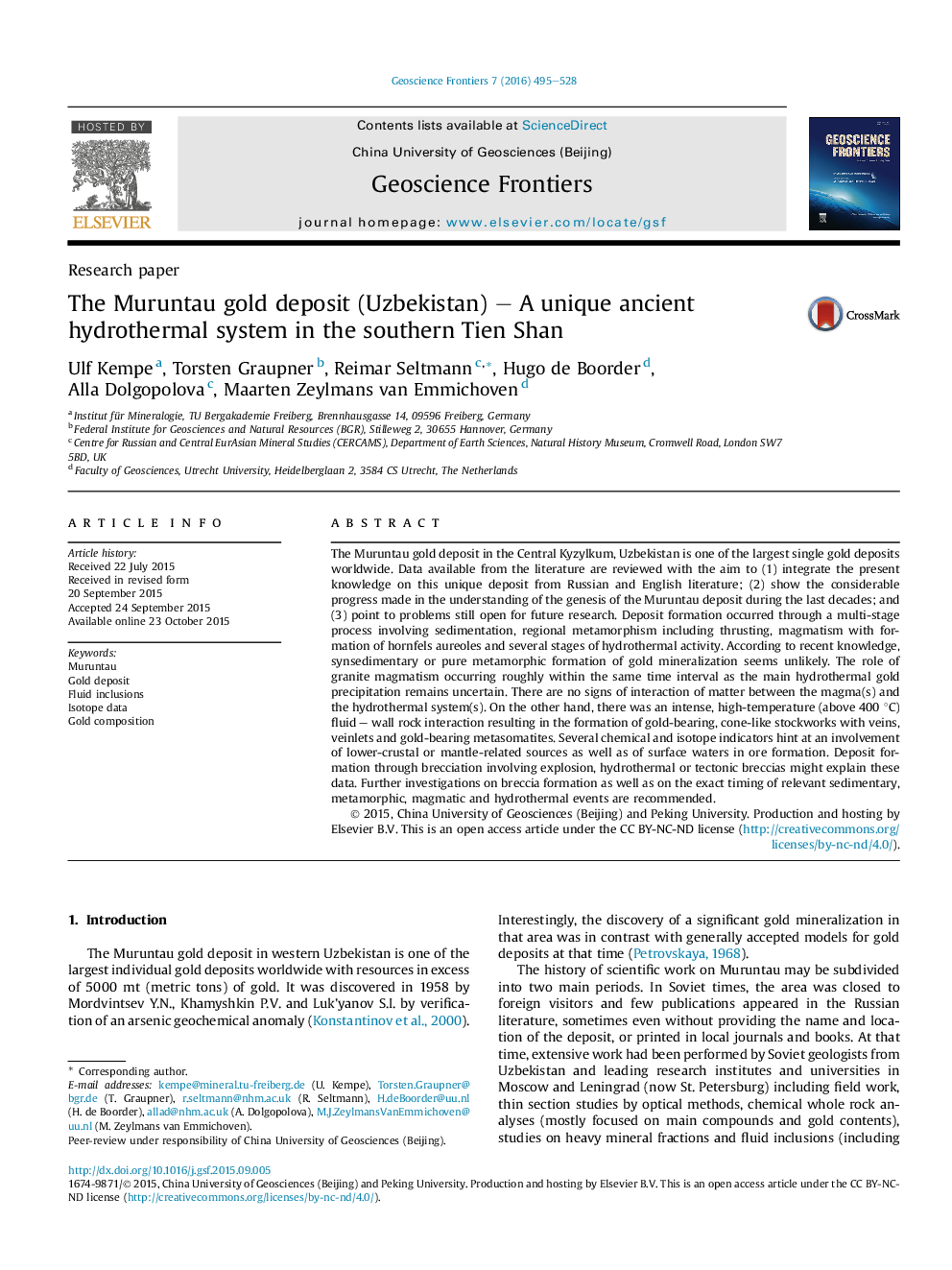| Article ID | Journal | Published Year | Pages | File Type |
|---|---|---|---|---|
| 4681513 | Geoscience Frontiers | 2016 | 34 Pages |
•Integral review of Russian and English literature including most recent research.•Discussion of various genetic concepts (sedimentary, metamorphic, magmatic).•Critical analysis of legacy data regarding formation conditions and absolute age relations.•Discussion of reasons for extraordinary size of the Muruntau deposit.
The Muruntau gold deposit in the Central Kyzylkum, Uzbekistan is one of the largest single gold deposits worldwide. Data available from the literature are reviewed with the aim to (1) integrate the present knowledge on this unique deposit from Russian and English literature; (2) show the considerable progress made in the understanding of the genesis of the Muruntau deposit during the last decades; and (3) point to problems still open for future research. Deposit formation occurred through a multi-stage process involving sedimentation, regional metamorphism including thrusting, magmatism with formation of hornfels aureoles and several stages of hydrothermal activity. According to recent knowledge, synsedimentary or pure metamorphic formation of gold mineralization seems unlikely. The role of granite magmatism occurring roughly within the same time interval as the main hydrothermal gold precipitation remains uncertain. There are no signs of interaction of matter between the magma(s) and the hydrothermal system(s). On the other hand, there was an intense, high-temperature (above 400 °C) fluid – wall rock interaction resulting in the formation of gold-bearing, cone-like stockworks with veins, veinlets and gold-bearing metasomatites. Several chemical and isotope indicators hint at an involvement of lower-crustal or mantle-related sources as well as of surface waters in ore formation. Deposit formation through brecciation involving explosion, hydrothermal or tectonic breccias might explain these data. Further investigations on breccia formation as well as on the exact timing of relevant sedimentary, metamorphic, magmatic and hydrothermal events are recommended.
Graphical abstractFigure optionsDownload full-size imageDownload as PowerPoint slide
